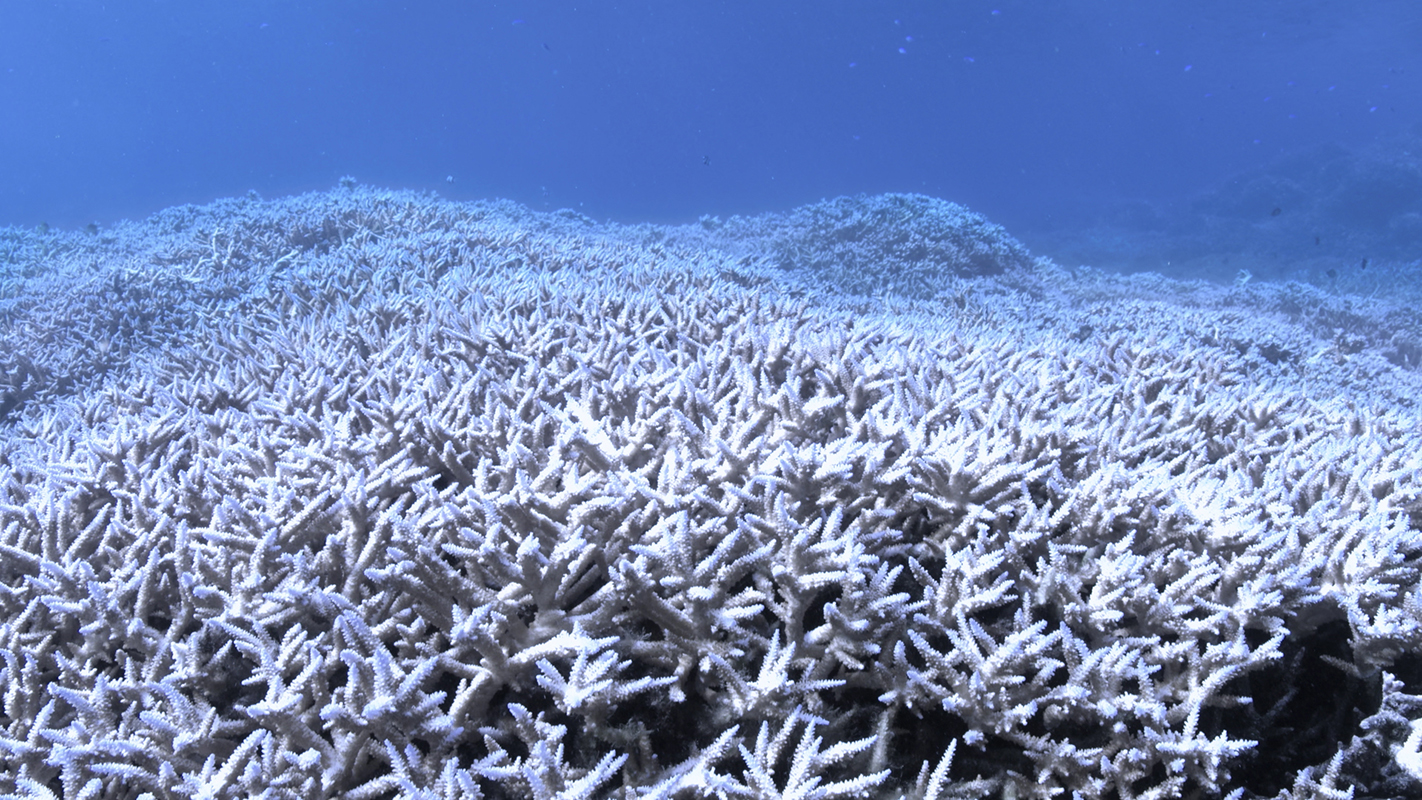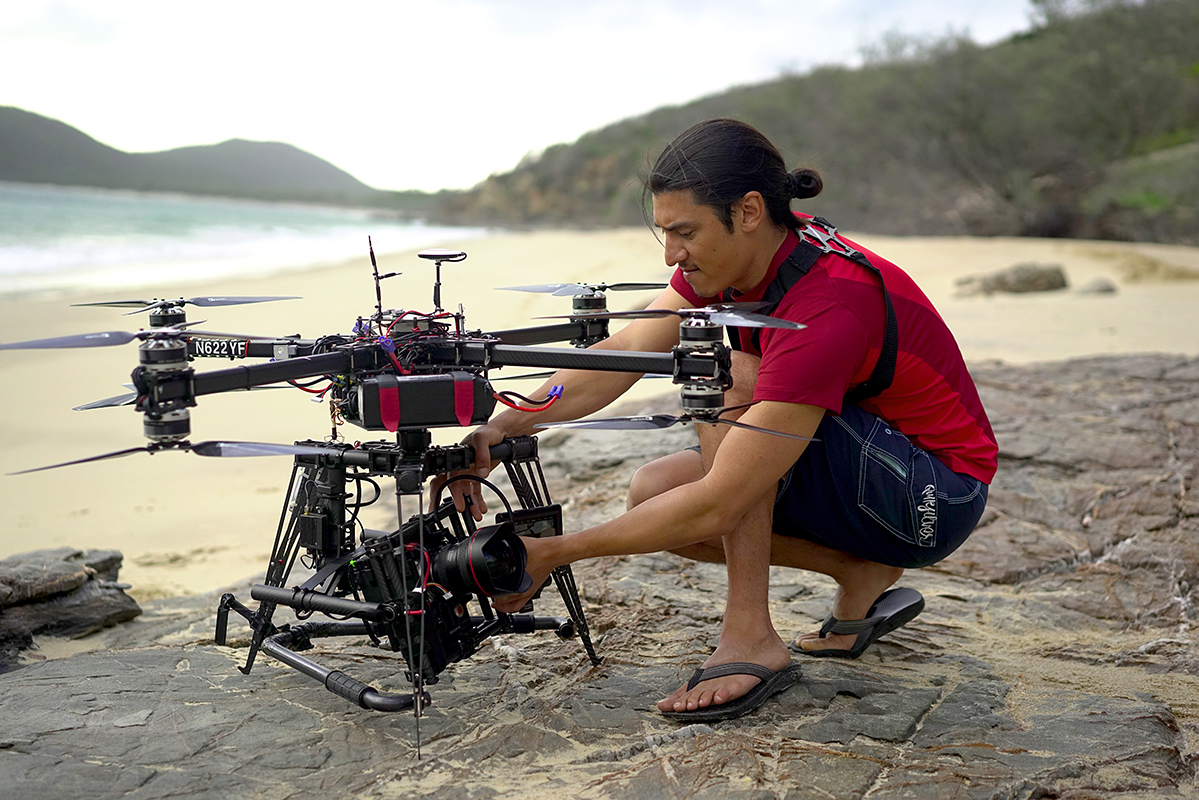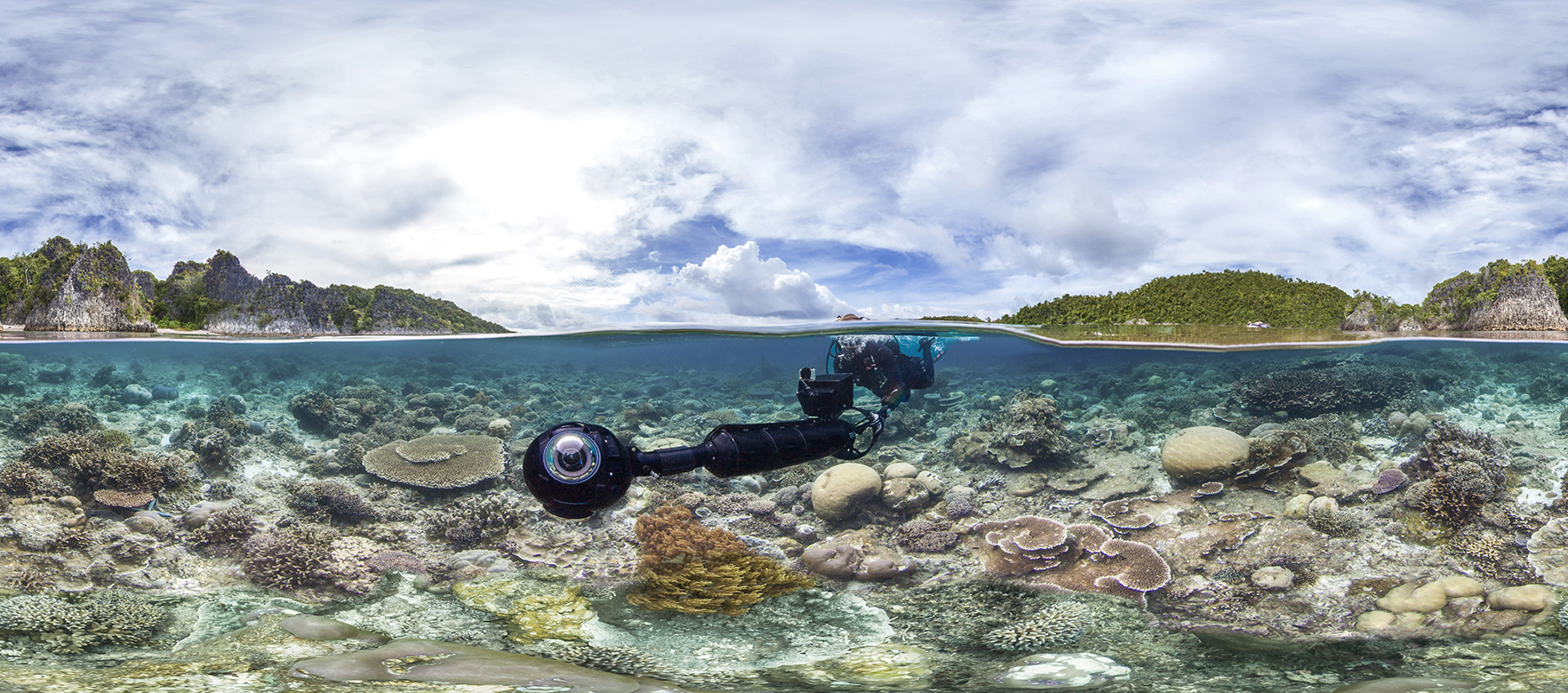Netflix Film 'Chasing Coral' Warns of Grim Future for Imperiled Reefs
A healthy coral reef is a magical place, teeming with diverse communities of colorful marine life. The enormous, stony structures of well-known reefs such as Australia's Great Barrier Reef can extend for thousands of miles, and appear almost indestructible. But reefs today face a deadly threat from an invisible foe — excess carbon dioxide produced by human activity, which is warming Earth's oceans at an alarming and unprecedented rate, leading to widespread coral bleaching and death.
"Chasing Coral," which premieres today (July 14) on Netflix, offers a window into some of the worst bleaching events that corals have ever faced, all of which have occurred within the last few decades. The documentary features scientists at the forefront of ocean research, and describes the efforts that are already underway to protect vulnerable reefs. The documentary also outlines what still needs to happen to mitigate the effects of climate change and limit global warming, before coral reefs as we know them disappear forever. [Worst Coral Reef Bleaching on Record for the Great Barrier Reef | Aerial Video]
In "Chasing Coral," the filmmakers set out to do something that had never been done before — document the changes in coral reefs over weeks as they bleached and died, to underscore the severity and speed of climate change's impact on reef ecosystems, and to convey the urgency required for individual and collective action to preserve corals in a warming world.
Scientists first observed large-scale coral reef bleaching — when expanses of multiple reefs turn white across many ocean locations — in the 1980s, the film's chief scientific adviser Mark Eakin, coordinator of the Coral Reef Watch program for the National Oceanographic and Atmospheric Association (NOAA), told Live Science.
A reef's rocky structure is a sprawling skeleton built by a colony of tiny, soft-bodied coral polyps. Corals are extremely sensitive to changes in water temperature, and when conditions are stressful — if waters become too warm for too long — they expel the microscopic algae that lend them their color and make their food. Bereft of algae, corals' transparent flesh reveals the white skeleton underneath, making the reef appear "bleached." If these conditions persist, the corals will eventually die.

Researchers identified the first global bleaching event in 1998, which was followed by another in 2010, Eakin said. A third mass bleaching episode that began in 2014 was still underway in 2015, when the "Chasing Coral" filmmakers installed stationary time-lapse cameras at reefs in Hawaii and in the Bahamas. And the bleaching continued into 2016, as the team shot manual time-lapse footage at locations at the Great Barrier Reef.
This large-scale coral bleaching was the first global event to last for more than a year, and its effects were so devastating that even the filmmakers were stunned by what they saw. One especially sobering scene shows Zackery Rago, a camera technician for the film and a self-described "coral nerd," at a site on the Great Barrier Reef, holding a piece of dying coral as its transparent flesh disintegrates in his hands.
Sign up for the Live Science daily newsletter now
Get the world’s most fascinating discoveries delivered straight to your inbox.
"It was far worse than we ever thought it would be," Jeff Orlowski, the film's director, told Live Science. But that made them only more determined to share what they found, he said.
"We knew we need to get this story out to the world," Orlowski said. "This was too important to let go, we needed to get imagery that was as powerful as possible." [Gallery: Peek Inside a Coral Nursery]

Not all corals die after bleaching, and some species are proving to be more resilient than others, Ruth Gates, "Chasing Coral" science adviser and director of the Hawaii Institute of Marine Biology at the University of Hawaii, told Live Science.
Scientists are studying the factors that help corals recover from bleaching, ranging from genetics to alliances with microorganisms to partnerships with more resistant corals. But seas are heating up so quickly and bleaching events are occurring so frequently that even hardier corals may ultimately not survive, Gates said.
"The intensities of temperatures are overwhelming everybody's capacities," she said. "Temperatures have been so high for so long that even the most resistant corals, in some cases, are not looking good."
And no mitigation strategy will be enough to save coral reefs if fossil fuel use continues unchecked and Earth continues to warm, Gates told Live Science.
"If we don’t intervene in the next 10 years, we'll be discussing the demise of reefs in our lifetime," Gates said.

While "Chasing Coral" doesn't pull any punches about the precarious future of reefs, it also highlights the fascinating biology of corals and the beauty of reef ecosystems. They are home to diverse populations of fish and invertebrates, many of which sustain human populations as well, Orlowski said.
And perhaps the film will help audiences to recognize the urgency of preserving these threatened environments, particularly when climate change's devastating impact is already underway, according to Eakin.
"A lot of people feel that climate change is something that's going to happen in the distant future, or in some faraway place," Eakin told Live Science. "This shows that there are very important ecosystems that people depend on that are already affected by climate change — and it's getting worse. So hopefully that'll help bring people together on the fact that we need to do what we can to save these reefs," he said.
Original article on Live Science.

Mindy Weisberger is an editor at Scholastic and a former Live Science channel editor and senior writer. She has reported on general science, covering climate change, paleontology, biology and space. Mindy studied film at Columbia University; prior to Live Science she produced, wrote and directed media for the American Museum of Natural History in New York City. Her videos about dinosaurs, astrophysics, biodiversity and evolution appear in museums and science centers worldwide, earning awards such as the CINE Golden Eagle and the Communicator Award of Excellence. Her writing has also appeared in Scientific American, The Washington Post and How It Works Magazine. Her book "Rise of the Zombie Bugs: The Surprising Science of Parasitic Mind Control" will be published in spring 2025 by Johns Hopkins University Press.











